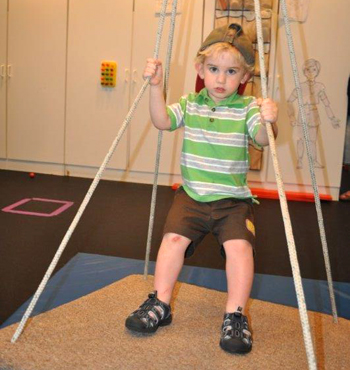
|
Pediatric Occupational, Physical, ABA/Behavioral, Feeding, Speech, and Language Therapies Main Clinic: 931-372-2567 1445 East 10th Street Cookeville, TN 38501 Email: [email protected] HIPAA Secure Email: [email protected] Fax: (931) 372-2572 ABA Clinic: 931-201-9534 400 Dubois Road Cookeville, TN 38501 Email: [email protected] Please call today to get started! Most insurances accepted! |

|
| Who needs therapy? | SE HABLA ESPAÑOL |
Learning Schedule
Center of Development: Occupational Therapy
Sample Learning Schedule for a student with Sensory Integration Dysfunction
Remember that these children learn through movement, crave more movement, and need more movement and touch than other children to feel calmer and to focus. You have to explore more teaching techniques than traditional classroom paper and pencil learning, you have to find hands on activities that they can learn from.
1. Show the student the schedule for the next hour either with pictures, written if they can read, and break activities up into 15 minute increments.
2. Start the learning session with swinging in a linear direction with a weighted blanket on them, a vibration massager or other hand fidget, and brush and joint compressions if needed. Let them swing for at least 10-15 minutes.
3. Go to the "work" table and do academics for your set time goal (start out small such as 15 minutes of "work", then move up to 30 minutes gradually, adding one to two minutes each day to "work" time) Use a timer that they can see either digital, visual timer, or egg timer (they often are distracted by the ticking). If they get distracted while doing the activity, then remind them of their reward at the end of the session, and they can't get the reward without sitting and trying to do the academics while the timer is going.
4. After timer goes off, give them a choice board either verbally, visually, or written.
Calming choices are:
1. Swinging in a linear movement.
2. Being "sandwhiched" between bean bags
3. Having a therapy ball rolled over them and deep pressure all over their body.
4. Wearing a weighted vest or weighted blanket
5. Brushing and joint compressions
6. Jumping with ankle and wrist weights on a trampoline, counting to 20.
7. Medicine ball basketball or catch and throw game
8. Wheelbarow walking, crab walking, crawling through tunnels through an obstacle course
9. Listening to Gregorian Chant music while rocking in a swing or rocking chair
10. Rolling self up in lycra
11. Sitting on a move and sit, wearing a weighted vest, wearing wrist and ankle weights can all be done while sitting at a "work" table.
*After 5 minutes of these activities, go back and do work for 15-20 minutes setting timer to whatever they can do. If they get fidgety while working, ask them to complete what they are doing, then judge when they need a movement break again.
*Consider not calling "academics" the word "work", consider using "learning opportunity" or something else more appealing.
*Always use positive reinforcement, praise the little stuff....and the big stuff will follow!
Again, don't forget to think about their learning style and what works for them, let them use their creativity, let them learn through touch, movement, and hands on experiments. These children will always do better when they learn through all their senses, they will not remember the paper and pencil information.
Center of Development OT 931-372-2567
Site empowered by
WebOnTheFly